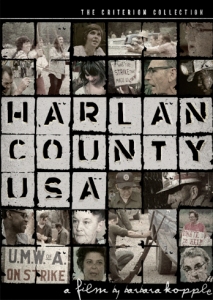 If Barbara Kopple were making “Harlan County U.S.A.” today it would be focused on environmental ramifications of coal mining and the broader corruption of big business and Wall Street over the little guy, and only then would it look at the health and safety conditions provided to the common working man. And yet it’s remarkable how relevant Kopple’s pinnacle documentary, 40 years after its initial release, still feels today.
If Barbara Kopple were making “Harlan County U.S.A.” today it would be focused on environmental ramifications of coal mining and the broader corruption of big business and Wall Street over the little guy, and only then would it look at the health and safety conditions provided to the common working man. And yet it’s remarkable how relevant Kopple’s pinnacle documentary, 40 years after its initial release, still feels today.
“Harlan County U.S.A” came out in the period of Maysles Brothers, fly on the wall documentaries and shares its style, but it set the stage for advocacy documentaries of all stripes. It proved that if you’re in the right place at the right time and turn your camera on, you can tell a story and change the world.
Kopple was able to do so because she and her crew quickly earned the trust of the striking coal miners on the front lines. They needed bodies to be there blocking the roads and holding the pickets, and they did it. So while Kopple doesn’t take the time to introduce many of these people with lower thirds or voiceover, we feel we know them intimately, each with thick accents and tender, passionate expressions as they debate at length about their problems and how to make a difference. The way they’re filmed, gritty and closely, these faces can all adorn LIFE Magazine covers. They are the symbols of depression, poverty and American values.
And “Harlan County” establishes such a beautiful sense of place. Although this is a very political and humanist movie, Kopple’s instinct is to open the film riding the conveyer belts in the narrow two-foot passageways under the coal mountains. The surreal, otherworldly lighting, pitch black waterfalls of coal and dark, grimy visages on the workers all speak volumes.
There’s no ambiguity in Kopple’s film, even going as far as to find a wonderfully compelling and menacing villain. But while Kopple herself doesn’t aim for the movie to feel revolutionary or righteous in the way so many slick, advocacy docs vying for Oscars would today, it boldly asserts that viewers have to choose a side. Hazel Dickens sings, “Which side are you on,” a terrific proletariat anthem, and Kopple is very clear that supporting the miners is strictly a human issue, not one of politics or business more generally.
When the miners take their cause to New York, a cop takes the time to ask what they’re fighting for. He’s astonished by how little they make, how dangerous their job can be, and the light scene stands apart from the rest of the heavier political discourse. Then there’s the villainous strike breaker who demands Kopple’s press pass. To this day when she says, like him, she must’ve misplaced it, the line still gets applause.
Memorable human moments like this are the reason this documentary, above other advocacy docs, demands a second viewing. It’s timeless and innovative even still, and yet few films have captured a time, a place and a moment so well.
